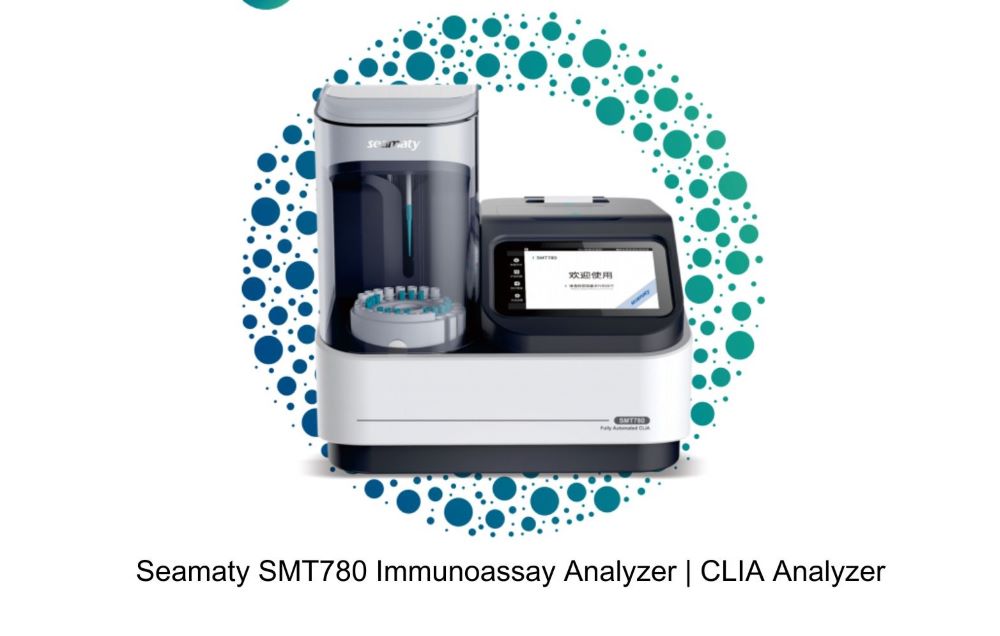release time:2023-09-11 14:49:01
In the ever-evolving landscape of healthcare, technological advancements continue to play a pivotal role in improving patient care and streamlining medical processes. One such innovation that has caught the attention of healthcare professionals is the Seamaty SE1 handheld electrolyte analyzer. This portable device is transforming the way electrolyte analysis is conducted in various healthcare settings, offering distinct advantages over traditional electrolyte analyzers. In this article, we will explore the key features and benefits of the SE1 handheld electrolyte analyzer and why it outshines its traditional counterparts.

One of the most noticeable differences between the SE1 handheld electrolyte analyzer and traditional electrolyte analyzers is their size. Traditional analyzers are typically large and bulky, occupying valuable space in a clinical laboratory. In contrast, the SE1 boasts a compact, handheld design with dimensions of 295*215*95 mm. This reduced footprint allows healthcare professionals to perform electrolyte analysis directly at the patient's bedside, in a physician's office lab, or even at urgent care and retail clinics. The portability and ease of use eliminate the need for sample transportation, significantly reducing turnaround times and improving patient care.
Traditional electrolyte analyzers are known for their substantial weight, often ranging from 6 to 10 kilograms. The SE1, on the other hand, is a lightweight marvel, tipping the scales at a mere 0.6 kilograms. This remarkable weight difference makes the SE1 handheld electrolyte analyzer an excellent choice for healthcare professionals on the move, allowing them to carry out tests effortlessly and with minimal physical strain. The portability of the SE1 translates into increased flexibility in healthcare settings, ensuring that electrolyte analysis can be performed wherever and whenever needed.
Traditional electrolyte analyzers often require complex procedures for operation, limiting their use to skilled personnel. In contrast, the SE1 handheld analyzer features a user-friendly interface that simplifies the entire process. With just three easy steps, even non-specialized personnel can operate the SE1 effectively. This user-friendliness not only enhances the convenience of electrolyte analysis but also reduces the need for professional operators, making it accessible to a broader range of healthcare professionals.
The SE1 handheld electrolyte analyzer is designed to cater to a variety of sample types, including capillary or whole blood, serum, plasma, and urine. Traditional analyzers may have limitations when it comes to sample compatibility. This versatility allows healthcare professionals to choose the most suitable sample type for a particular patient, ensuring accurate and comprehensive electrolyte analysis.
Traditional electrolyte analyzers require routine maintenance, such as cleaning probes and electrode replacements, which often demand the expertise of professional personnel. In contrast, the SE1 is virtually maintenance-free. It eliminates the need for tubes, valves, and liquid consumption, reducing the overall cost of operation. This maintenance-free design translates into significant cost savings and peace of mind for healthcare facilities.
When considering the cost of operating an electrolyte analyzer, the differences between the SE1 and traditional analyzers become even more pronounced. Traditional analyzers entail expenses such as spare parts replacement, electrode replacement costs for multiple parameters, daily calibration pack costs, QC expenses, and consumable costs. These expenses can add up quickly and significantly impact the budget of a healthcare facility.
In contrast, the SE1 handheld analyzer boasts cost-efficiency in several aspects:
- Spare parts and electrode replacement costs are minimal or non-existent.
- Daily calibration pack costs are reduced.
- Consumable costs are minimal, with only QC and cartridge costs to consider.
Moreover, traditional analyzers may require meticulous training, professional salaries, and ongoing maintenance costs, making the SE1 an attractive option with its simplicity and lower operational expenses.
Traditional electrolyte analyzers typically rely on reagent packs, calibration solutions, and electrodes, leading to substantial consumable usage. In contrast, the SE1 handheld analyzer minimizes consumables, contributing to a more sustainable and environmentally friendly approach to electrolyte analysis. This reduction in consumables not only benefits the environment but also leads to cost savings for healthcare facilities.
|
Advantages |
Seamaty SE1 Handheld Analyzer |
Traditional Electrolyte Analyzers |
|
Size |
Compact: 295*215*95 mm |
Benchtop (Large) |
|
Portability |
Lightweight: 0.6 kg |
Heavier (6-10 kg) |
|
Operation |
Easy: Only 3 steps |
Complex, Skilled Personnel Needed |
|
Sample Types Supported |
Versatile: Capillary, Serum, Plasma, Urine |
Limited |
|
Maintenance |
Maintenance-Free |
Requires Routine Maintenance |
|
Maintenance & Consumables Cost |
Cost-Effective |
Significant Costs Involved |
|
Consumables |
Minimal |
Consumable-Intensive |
The Seamaty SE1 handheld electrolyte analyzer is a game-changer in the world of healthcare diagnostics. Its compact size, portability, user-friendly interface, versatile sample compatibility, and maintenance-free operation make it a superior choice when compared to traditional electrolyte analyzers. Furthermore, the cost-efficiency and reduced environmental impact of the SE1 add to its appeal. As healthcare professionals continue to seek innovative solutions to enhance patient care and streamline operations, the SE1 handheld analyzer stands out as a remarkable advancement that is revolutionizing electrolyte analysis across diverse healthcare settings.
▼Click to watch a video introduction of SE1 handheld electrolyte analyzer▼
[1]. How to Choose the Perfect Electrolyte Analyzer for Your Small to Mid-Sized Clinics?
[2]. The Power of Portability: Seamaty's SE1 and SG1 Analyzers Transforming Point-of-Care Testing
[3]. Roche 9180 vs. Seamaty SE1: Analyzing Electrolyte Analyzers for Near-Patient Testing
[4]. Enhancing Patient Care with Seamaty SE1: A Handheld Electrolyte Analyzer for Every Setting
[5]. Electrolyte Analyzer: Introduction, Principle, How to Use

2024-01-16
Explore the 14 crucial factors impacting the precision of veterinary biochemical analyzers. From animal-related variables to species-specific considerations, learn how to ensure accurate results for informed healthcare decisions in animal medicine. Discover insights for maintaining instrument accuracy and minimizing operator errors in this comprehensive guide.

2024-01-05
Revolutionize your lab efficiency with the SMT780 Immunoassay Analyzer. Built on CLIA principles, this compact system offers precision and speed, providing over 30 parameters in a single run. Explore user-friendly innovation and real-world applications, setting new standards in diagnostics.

2022-01-21
Today, we will briefly introduce the biochemical significance of Seamaty's "9 Diabetes Test Parameters". The featured item in the "9 Diabetes Test Parameters" reagent tray is fructosamine.